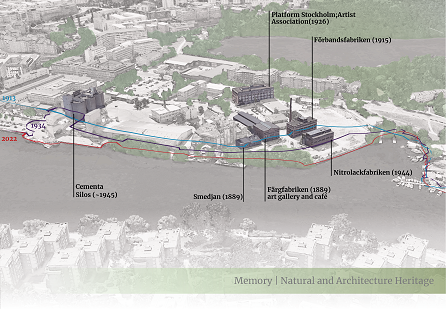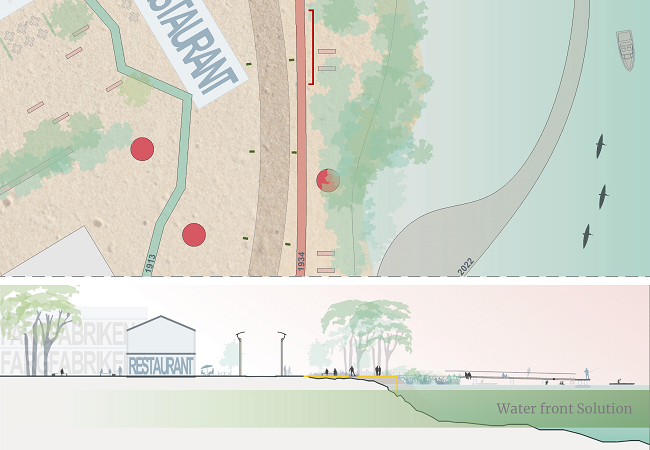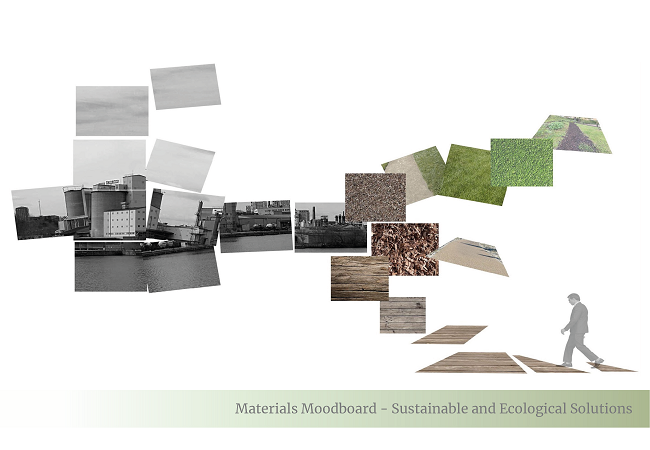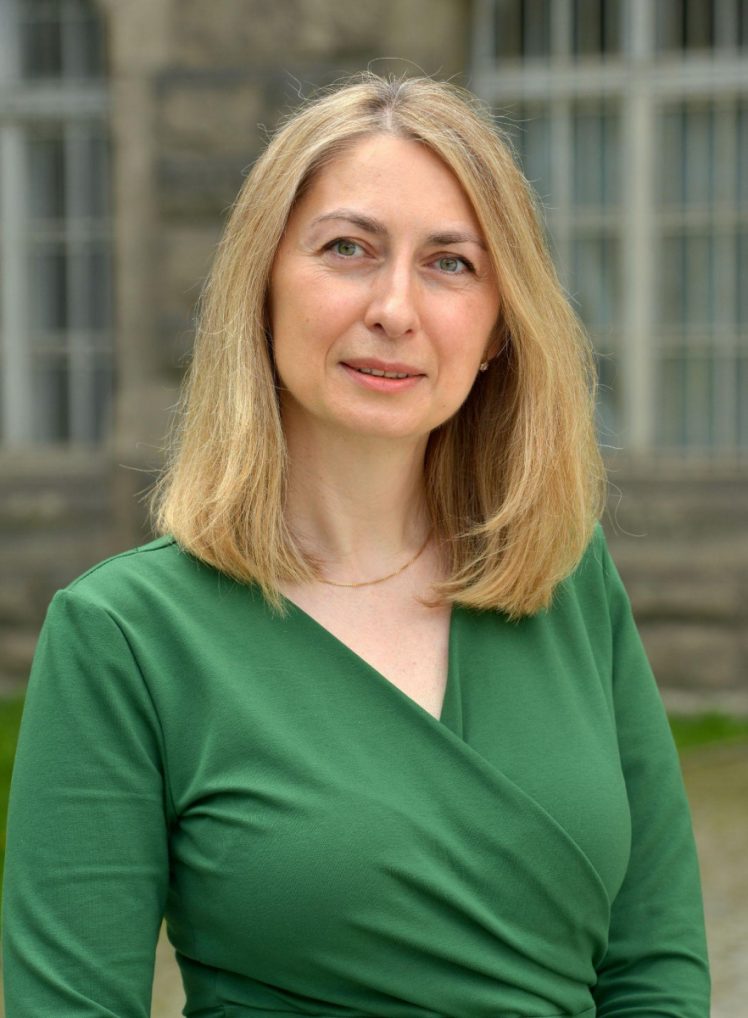Urban waterfronts as complex bioregions by nature and also socio-economical hubs by their history, provide a real challenge for planning institutions. The European Union SOS Climate Waterfronts project[1] is aimed at the development of innovative and sustainable strategies for solving present situations, while helping to plan future resilient and adaptive waterfronts. The project allowed a multi and cultural disciplinary team to visit KTH Royal Institute of Technology in Stockholm. For a month of intensive work we did a lot of transdisciplinary thinking and designing around the urban waterfront redevelopment of the Stockholm area called Lövholmen.

At EU level, an urban agenda[2] has been drawn up to attain sustainable urban development, with a special focus on climate change issues. A cohesive policy is to lay the groundwork for sustainable, innovative and economically strong development for the cities of Europe. The approach to sustainable urban waterfront redevelopment differs from locale to locale, but literature on urban waterfront developments show some general challenges and key issues that were embedded in our plans.
Nowadays the land and buildings of Lövholmen[3] are shared by private and public ownership. The area is characterized by an interesting industrial setting, under an ongoing transformation to host creative activities, like Färgfabriken art center[4], Platform Stockholm, Concrete Art Gallery & Academy AB. The area is also characterized by a large and continuous waterfront, connecting Gröndal housing area and new Liljeholmskajen development. This provides us with a very effective transport systems network. At last, there is an enormous natural potential in close proximity to Trekanten lake water and surrounding woods. But also great economic values are at stake: builders want to demolish and build new. Recent residents and many others interested in urban planning, want to proceed more cautiously and take advantage of several of the unique buildings.

In our Vision[5], Lövholmen must be transformed into a gathering place with attractive destinations for all people in Stockholm focusing on the connection between nature and arts and so becoming a mending of memory and nature. Besides an artistic and green neighborhood, it needs to be economically sustainable as well. Therefore the area must facilitate unexpected collaborations with return to investment potential, thus paving the way for Lövholmen’s future.
By creating a business plan where producers and investors share in business revenues, both economically driven stakeholders as well as artists, may work in the same direction sharing the same interests. This way, Lövholmen has the potential of becoming an experimental hub for art, business, technology and resilience. Considering the area redevelopment as ‘a cultural and resilient hub’, innovative techniques provide chances to work with companies and universities as trial projects, potentially reducing costs. This could be especially effective when it comes to decontamination of the soil or in the use of materials. The field lab role brings attention and a reputation for the area, creating interest for forward-thinking businesses to settle down.

[1] http://sosclimatewaterfront.eu/sos/project
[2] Urban Agenda: https://ec.europa.eu/regional_policy/sources/docgener/brochure/urban_agenda_eu_en.pdf
[3] http://7mostendangered.eu/sites/industrial-area-of-lovholmen-stockholm-sweden/
[4] https://archello.com/project/fargfabriken-art-museum
Contact and more information

Team contact:
Magdalena Rembeza, PhD, Faculty of Architecture, Gdańsk University of Technology (GUT)
 KTH contact:
KTH contact:
Katarina Larsen, KTH Royal Institute of Technology
Team members:
Ana Neiva, PhD, Faculty of Architecture of the University of Porto (FAUP)
Magdalena Rembeza, PhD, Faculty of Architecture, Gdańsk University of Technology (GUT)
Metha Bregman, drs/Msc, Behavioral scientist, CPONH, the Netherlands
SOS Climate Waterfront project https://www.kth.se/philhist/historia/forskning/environmental-histor/sos-climate-waterfront-1.1037673
SOS Climate waterfront project in CORDIS
https://cordis.europa.eu/project/id/823901
[5] The vision for Lövholmen was created by the whole team: Ana Neiva, Magdalena Rembeza, Metha Bregman, Elena Paudice, Nils Brattgard, Shea Nee Chew

No comments yet. Be the first to comment!